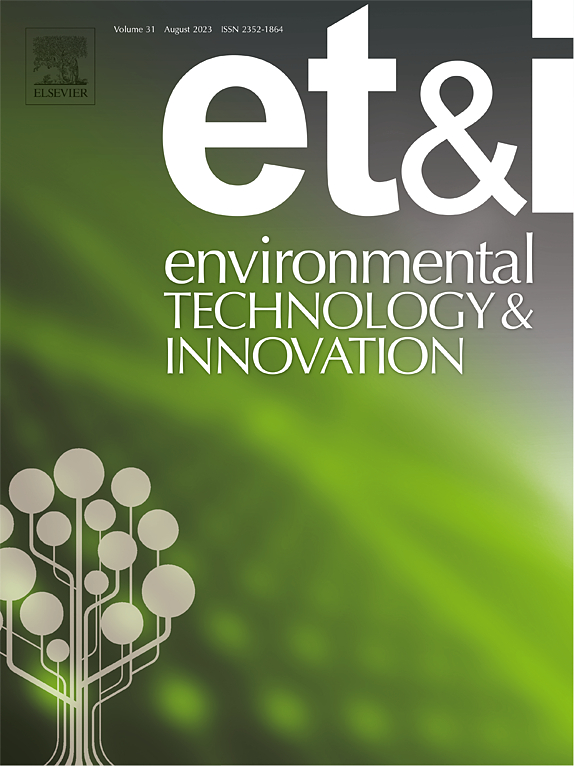Antibacterial and biofilm inhibition of Helicobacter pylori using green synthesized MWCNTs/ZnO/Chitosan nanocomposites
IF 6.7
2区 环境科学与生态学
Q1 BIOTECHNOLOGY & APPLIED MICROBIOLOGY
引用次数: 0
Abstract
Helicobacter pylori, a Gram-negative bacterium, is a major cause of gastritis, peptic ulcers and gastric cancer. Its biofilm formation and antibiotic resistance in patients make it difficult for treatment. This study concerned the synthesis and antibacterial and antibiofilm evaluation of MWCNTs/ZnO/Chitosan nanocomposite against H. pylori. Green synthesis methods were used to develop the nanocomposite based on the formation of ZnO nanoparticles and the functionalization of MWCNTs. The XRD, SEM, TEM, and FTIR characteristics revealed the structural stability and the successful integration of ZnO, MWCNTs, and chitosan into the composite. The results indicated that the MIC values for ZnO nanoparticles ranged from 25 to 50 μg/mL, while those for chitosan were above 100 μg/mL. Additionally, the MWCNTs/ZnO/Chitosan nanocomposite exhibited the lowest MIC values, with 12.5 μg/mL for H. pylori clinical isolate 1 and 25 μg/mL for H. pylori clinical isolate 2 and H. pylori ATCC 43504 strains. MIC tests showed that the nanocomposite had better antibacterial activity, therefore having lower MIC values than normal antibiotics like metronidazole (MNZ) and clarithromycin (CLR) as well as its components. ZnO-induced reactive oxygen species (ROS), chitosan's bacterial membrane interaction, and MWCNTs part in improved nanoparticle distribution and mechanical biofilm disturbance all contributed to the antimicrobial mechanisms. The research points out the MWCNTs/ZnO/Chitosan nanocomposite as a hopeful solution for antibiotic-resistant H. pylori bacteria causes further in vivo experiments and medical uses rest on its synergistic antibacterial activity and ability to disrupt biofilms. These results emphasize the promise of nanotechnology in creating novel therapies to fight ongoing bacterial infections.
求助全文
约1分钟内获得全文
求助全文
来源期刊

Environmental Technology & Innovation
Environmental Science-General Environmental Science
CiteScore
14.00
自引率
4.20%
发文量
435
审稿时长
74 days
期刊介绍:
Environmental Technology & Innovation adopts a challenge-oriented approach to solutions by integrating natural sciences to promote a sustainable future. The journal aims to foster the creation and development of innovative products, technologies, and ideas that enhance the environment, with impacts across soil, air, water, and food in rural and urban areas.
As a platform for disseminating scientific evidence for environmental protection and sustainable development, the journal emphasizes fundamental science, methodologies, tools, techniques, and policy considerations. It emphasizes the importance of science and technology in environmental benefits, including smarter, cleaner technologies for environmental protection, more efficient resource processing methods, and the evidence supporting their effectiveness.
 求助内容:
求助内容: 应助结果提醒方式:
应助结果提醒方式:


